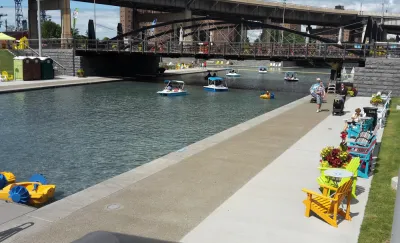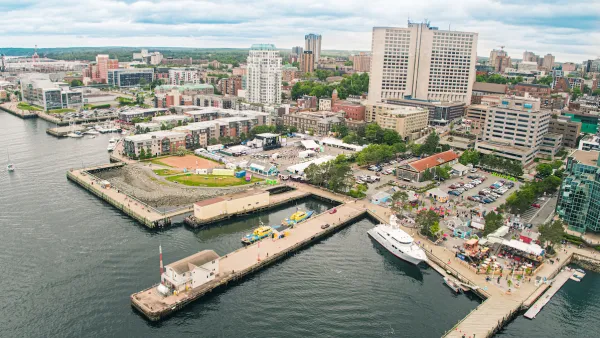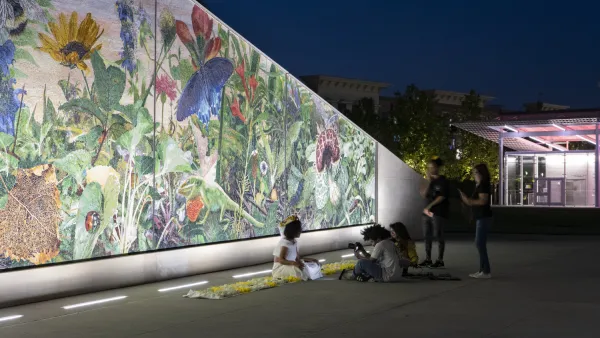New qualitative research into three example public spaces in the United States offers best practices and obstacles to avoid in the placemaking process.

Nate Storring, deputy director of Project for Public Spaces, writes for the Brookings Institution blog, The Avenue, to provide a list of "takeaways" generated by a recent qualitative study into the holistic effects of three public spaces in the United States.
The research in question is a recent entry in the Bass Center for Transformative Placemaking research series titled "Beyond traditional measures: Examining the holistic impacts of public space investments in three cities." Researchers Hanna Love and Cailean Kok qualitatively examined public spaces in Flint, Mich., Buffalo, N.Y., and Albuquerque, N.M. "to shed new light on these questions and chart a path forward for more equitable and effective placemaking," explains Storring.
Storring focuses on four main takeways from the research, with more detail included in the source article below:
- Public space for 'everyone' don't work for everyone.
- Placemaking needs thoughtful place governance to sustain itself
- When it comes to money, 'how' sometimes matters more than 'how much'
- The future of public spaces is qualitative
On this last point, Storring notes that the groundbreaking observational research techniques pioneered by William H. Whyte and Jan Gehl "to track the number and kinds of people in a space and how they use it" offer a baseline of research that nevertheless fails to capture key issues, such as public perception, interpersonal interactions, and broader benefits to public health, the economy, and the environment. "Since then, academic research on public spaces has continued to evolve, with a growing emphasis on qualitative techniques," according to Storring.
FULL STORY: Four takeaways on public space investment for placemakers

National Parks Layoffs Will Cause Communities to Lose Billions
Thousands of essential park workers were laid off this week, just before the busy spring break season.

Retro-silient?: America’s First “Eco-burb,” The Woodlands Turns 50
A master-planned community north of Houston offers lessons on green infrastructure and resilient design, but falls short of its founder’s lofty affordability and walkability goals.

Delivering for America Plan Will Downgrade Mail Service in at Least 49.5 Percent of Zip Codes
Republican and Democrat lawmakers criticize the plan for its disproportionate negative impact on rural communities.

Test News Post 1
This is a summary

Test News Headline 46
Test for the image on the front page.

Balancing Bombs and Butterflies: How the National Guard Protects a Rare Species
The National Guard at Fort Indiantown Gap uses GIS technology and land management strategies to balance military training with conservation efforts, ensuring the survival of the rare eastern regal fritillary butterfly.
Urban Design for Planners 1: Software Tools
This six-course series explores essential urban design concepts using open source software and equips planners with the tools they need to participate fully in the urban design process.
Planning for Universal Design
Learn the tools for implementing Universal Design in planning regulations.
EMC Planning Group, Inc.
Planetizen
Planetizen
Mpact (formerly Rail~Volution)
Great Falls Development Authority, Inc.
HUDs Office of Policy Development and Research
NYU Wagner Graduate School of Public Service





























